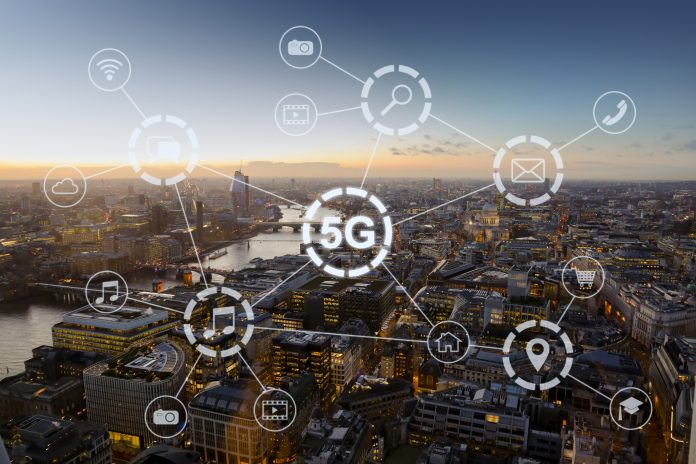Improved connectivity can help the country meet – or even beat – its target by reducing emissions and supporting greener ways of working, but how?
The government has committed to reaching net zero emissions by 2050. At BT, we’ve made a pledge to become a circular business much faster – by March 2031 for our own operations and by March 2041 for our customers and supply chain.
Connectivity can help the country meet – or even beat – its target by reducing emissions and supporting greener ways of working. For one, we’re experiencing a hybrid working revolution, and better connectivity will mean that remote working will not only continue to empower the workforce but also improve its sustainability – reducing travel and energy usage, for example.
Beyond this, improved connectivity also provides the bedrock for smarter homes, in which door locks, thermostats, cameras, lights and more are all centrally connected and controlled for greater efficiency.
This can be extended further to the concept of smart cities. These are crucial to establishing sustainable, greener communities. In smart cities, Internet of Things (IoT) connected sensors, devices and applications are widely deployed to gather information, using analytics to make sense of the data supported by fast and reliable connectivity to deliver the actionable insights needed to create more energy efficiency and cut carbon emissions.
Indeed, embracing smart city technology has been proven to help sustainable practices like protecting water supplies. For example, BT worked with Yorkshire Water to install state-of- the-art IoT monitors on water courses feeding a reservoir to remotely monitor water quality.
An EE 4G mast provides improved connectivity for the smart sensors to relay data back to Yorkshire Water – where scientists and engineers can select the best available water sources for transfer to the treatment works.
But the IoT technology that underpins smart homes and smart cities needs a high and resilient capacity. Likewise, greener connectivity solutions such as smart energy grids and smart electronic vehicles (EVs) inevitably create dense networks of sensors and small cells that place heavy and uneven demand on mobile infrastructure. There needs to be an infrastructure solution which can withstand this demand. The advent of 5G is a significant step toward that.
Evolving and improved connectivity
5G is, of course, the latest generation of wireless connectivity, an evolutionary journey that began in 1979 with the introduction of the first commercial cellular network. Mobile networks have advanced with each subsequent iteration – 2G introduced digital transmission and SMS, 3G enabled high-speed IP data networks and 4G represented a huge technological leap forward, offering far greater speed and bandwidth.
The current fifth-generation – or 5G – with its high reliability, low latency and the ability to connect multiple devices in a small area can open up access to new technologies. This has sown the seeds for the potential of mobile networks to transform businesses and enhance our increasingly data-driven society – and the opportunities for sustainability that this affords.
Fostering innovation
We believe technology and improved connectivity are essential to the transition to a low carbon economy. A joint report by BT and Accenture forecast that tech, including 5G, could contribute to a 13 per cent reduction in carbon emissions from the manufacturing sector by 2030. That’s why we’re dedicated to continuing investing in connectivity, as well as engaging with other organisations to foster innovation and unlock environmental benefits for our communities.
BT’s investment in AWS Wavelength for example, will open up mobile edge computing infrastructure for businesses to develop, deploy and scale mobile IoT applications securely.
Combining EE’s market-leading mobile infrastructure – recently named the UK’s best mobile network 10 years in a row – with AWS’s cloud expertise, will bring the power of AWS to the network edge for more business and public sector customers across the UK. This will provide fast, secure and high- bandwidth connectivity on the move for a wide range of different use cases including autonomous vehicles, smart industrial robots and community healthcare.
Building a strong foundation
Driving the transition to a low carbon economy depends on technological innovation. Solutions such as IoT sensors and edge computing will be key for organisations to collect data to optimise their operations for energy and reduce carbon dependence.
And we need access to near real-time data to run AI and applications over the top to drive meaningful emissions cuts. 5G has a huge part to play in this, especially as we move away from legacy infrastructure such as the Public Switched Telephone Network (PSTN).
But all of this relies on a strong foundation of connectivity. With robust connectivity comes innovation. And with innovation come new ways of connecting for good – to build a cleaner, greener future for everyone. That’s why BT Wholesale is dedicated to providing the connectivity the country needs for a more sustainable future.

This work is licensed under Creative Commons Attribution-NonCommercial-NoDerivatives 4.0 International.











